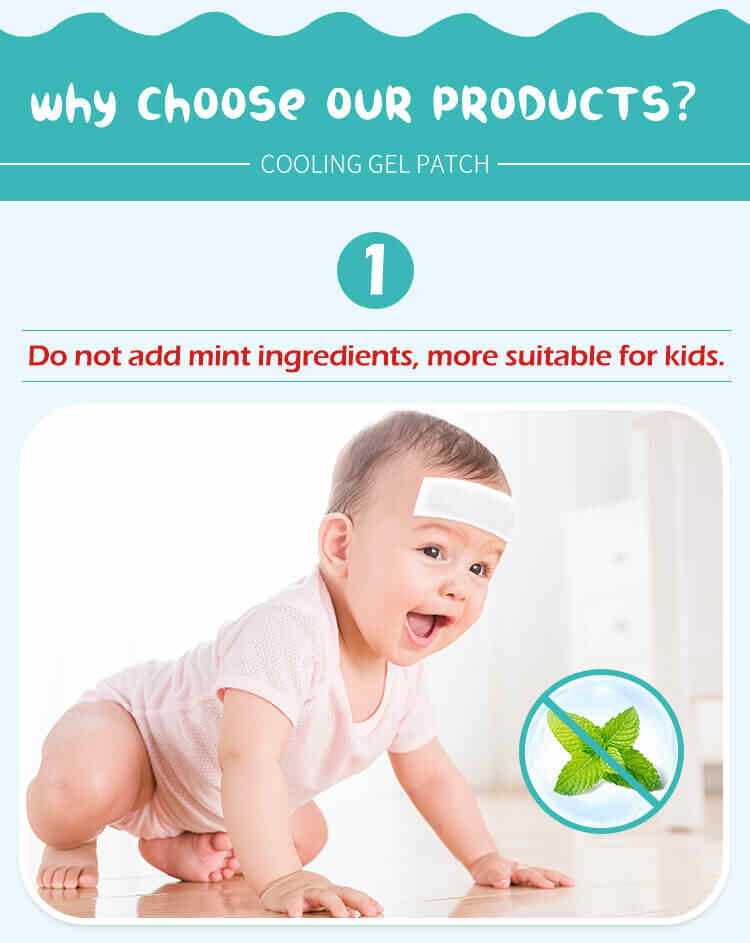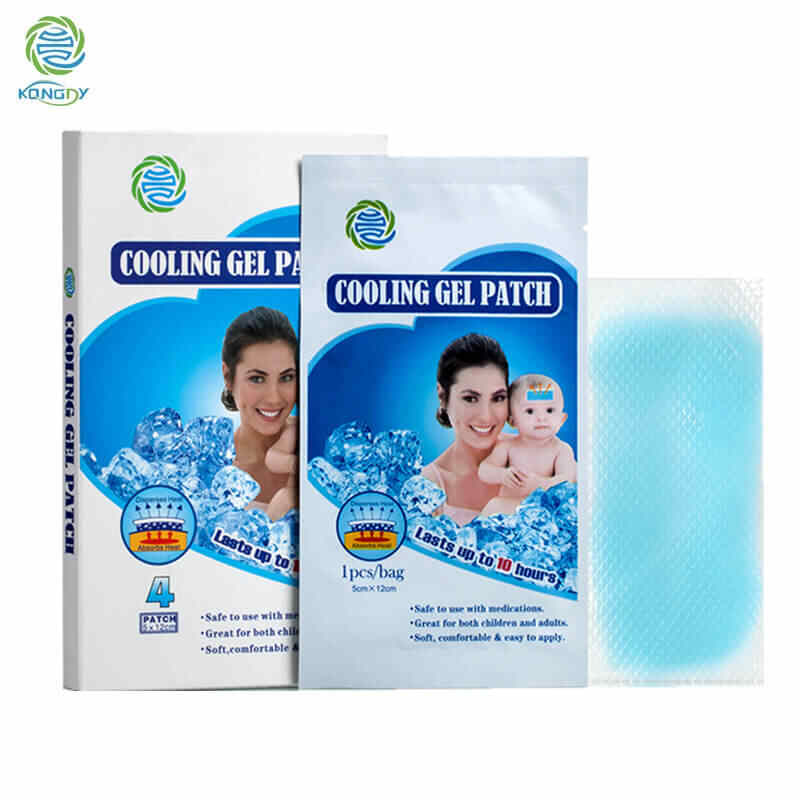Can My Fever Cooling Patch Packaging Be Eco-Friendly? A Guide for Brands Working with Fever Cooling Patch OEM Partners
In an age where consumers are increasingly eco-conscious, brands in the healthcare and wellness space are under growing pressure to adopt sustainable packaging. If you’re producing fever cooling patches through a fever cooling patch OEM model or sourcing from a fever cooling patch supplier, a critical question arises: Can your fever cooling patch packaging be eco-friendly?
The answer is yes — and making the switch could not only boost your brand reputation but also improve your competitiveness in a saturated market. In this article, we’ll explore the sustainable packaging options available, how you can implement them with your fever cooling patch manufacturer, and why going green matters for both your business and the planet.

1. Why Eco-Friendly Packaging Matters in the Fever Cooling Patch Industry
1.1. Environmental Impact
Fever cooling patches are often individually packed in plastic films or aluminum-based materials that are difficult to recycle. This contributes to landfill waste and microplastic pollution. By switching to sustainable packaging, your brand can significantly reduce its environmental footprint.
1.2. Consumer Expectations
More than ever, consumers demand transparency and sustainability from brands. According to a recent Nielsen report, 73% of global consumers say they would definitely or probably change their consumption habits to reduce their environmental impact. For companies using Private Label fever cooling patch services, aligning with eco-values can differentiate your brand.
1.3. Regulatory Trends
Governments around the world are imposing stricter environmental regulations. For example, the EU’s Packaging and Packaging Waste Directive (PPWD) requires reductions in unnecessary packaging and mandates recycling targets. If your Custom fever cooling patch product is distributed globally, eco-packaging can help you stay compliant.
2. Eco-Friendly Packaging Options for Fever Cooling Patches
When working with a fever cooling patch OEM partner or a fever cooling patch manufacturer, the following sustainable packaging options are worth exploring:
2.1. Biodegradable Films
Biodegradable or compostable films made from plant-based materials like PLA (polylactic acid) are increasingly available. These materials break down naturally, unlike traditional petroleum-based plastics.
2.2. Recyclable Laminates
Some suppliers now offer recyclable mono-material laminates. These single-substance packaging materials can be processed by standard recycling systems.
2.3. Paper-Based Pouches
Paper-based or paper-laminate pouches offer another alternative. When sourced from sustainably managed forests (FSC-certified), these can serve as a viable eco-friendly option while maintaining adequate barrier properties to protect the product.
2.4. Minimalist Outer Packaging
Brands can also reduce environmental impact by minimizing secondary packaging. Reducing the size and thickness of boxes or eliminating unnecessary inserts helps reduce waste and shipping emissions.
2.5. Soy-Based or Water-Based Inks
Printing on packaging can be made more sustainable with the use of soy-based or water-based inks, which are less toxic and easier to recycle than petroleum-based alternatives.
3. How to Implement Eco-Packaging with Your Fever Cooling Patch Supplier
3.1. Ask the Right Questions
Not all fever cooling patch suppliers offer eco-friendly packaging by default. Ask the following:
Do you offer biodegradable or recyclable packaging options?
Are your materials certified by recognized environmental organizations?
Can you support FSC-certified paper materials?
What sustainable ink options do you offer?
3.2. Collaborate on Customization
If you’re producing a Custom fever cooling patch, collaborate with your OEM partner on designing both the primary and secondary packaging. This ensures your sustainable goals align with the technical requirements of the patch, such as moisture resistance and barrier protection.
3.3. Conduct Testing
Sustainable materials should be tested for compatibility with your product. Ensure packaging doesn’t affect patch adhesion, cooling effect, or shelf life.
3.4. Educate the End Consumer
Use your eco-friendly packaging as a marketing advantage. Clearly label recyclable or compostable elements. Inform users about proper disposal, and share your sustainability story through QR codes or inserts.
4. The Role of OEM and Private Label Partners in Sustainability
Choosing the right fever cooling patch OEM partner is critical to implementing eco-friendly packaging effectively. Leading OEMs often stay ahead of sustainability trends and are better equipped to offer innovative solutions.
Look for the following traits in a sustainable fever cooling patch manufacturer:
ISO 14001 or similar environmental management certifications
In-house R&D for sustainable materials
Supply chain transparency and green sourcing
Willingness to co-develop eco-packaging for your Private Label fever cooling patch
By partnering with a forward-thinking fever cooling patch OEM, you can ensure the entire product cycle — from formulation to delivery — aligns with sustainability values.
5. Benefits of Eco-Friendly Fever Cooling Patch Packaging for Your Brand
5.1. Improved Brand Image
Using sustainable packaging demonstrates corporate responsibility. It sends a strong message to eco-conscious consumers, enhancing trust and brand loyalty.
5.2. Market Differentiation
While many brands still rely on conventional packaging, switching to eco-friendly options gives your Custom fever cooling patch a clear edge in marketing and shelf appeal.
5.3. Cost Savings in the Long Term
Though initial costs may be higher, sustainable packaging can reduce material use, lower shipping weight, and even cut taxes or penalties in regulated markets.
5.4. Eligibility for Green Certifications
Sustainable packaging can help your products meet the criteria for third-party certifications such as:
EcoCert
USDA Certified Biobased Product
FSC Certified
Green Seal
These certifications can increase consumer confidence and market reach.
Conclusion
The demand for eco-conscious products is more than just a trend — it's a shift in consumer expectations and global policy. If you’re producing fever cooling patches through a fever cooling patch OEM partner or considering a Private Label fever cooling patch product, embracing eco-friendly packaging is not only possible, but advisable.
Collaborating with the right fever cooling patch manufacturer or fever cooling patch supplier allows you to innovate sustainably, meet compliance standards, and connect with today’s environmentally aware consumers. Whether you opt for biodegradable films, recyclable laminates, or FSC-certified paper, going green is a smart investment for your brand and the planet.
Related Questions and Short Answers
Q1: What materials are best for eco-friendly fever cooling patch packaging?
A: Biodegradable films (e.g., PLA), recyclable mono-material laminates, and FSC-certified paper are ideal choices.
Q2: Can I still use custom designs on eco-friendly packaging?
A: Yes, most eco-packaging supports full customization, especially when printed with soy-based or water-based inks.
Q3: Does eco-friendly packaging affect the cooling performance of the patch?
A: Not if designed correctly. Always test new materials with your fever cooling patch OEM to ensure performance consistency.
Q4: Will sustainable packaging increase my production costs?
A: It may raise initial costs, but long-term savings, tax benefits, and consumer loyalty often outweigh the investment.
Q5: Can a Private Label fever cooling patch also be packaged sustainably?
A: Absolutely. Many OEMs offer full eco-packaging support for Private Label fever cooling patch projects.
Q6: How can I find a fever cooling patch supplier who supports green initiatives?
A: Look for suppliers with environmental certifications, transparent sourcing, and experience with sustainable packaging materials.






